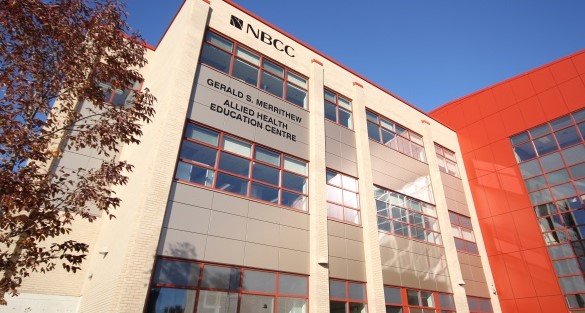One college. Two universities. A health care authority. All working together to improve health care in New Brunswick.
When the learners from NBCC’s Gerald S. Merrithew Allied Health Centre sit down with Bachelor of Nursing students from UNB Saint John, and medical students from Dalhousie Medicine NB, it’s difficult to tell which students come from which institution. Future respiratory therapists, pharmacy technicians, medical laboratory technologists and assistants, personal support workers and practical nurses from NBCC collaborate with tomorrow’s registered nurses and doctors, with support from Horizon Health Network.
It’s a gathering of health care professionals of varying disciplines, learning from and about each other for the future of health care in New Brunswick.
“The inter-professional approach is key in health care,” said Catherine Sidney, formerly the Department Head of the Allied Health Centre. “Our responsibility here is to ensure we instill that sense of collaboration and teamwork among all the students in Tucker Park, so they can take that with them when they go out into the workforce.”
Tucker Park is home to the Allied Health Centre, UNB SJ, Dalhousie Medicine NB, and the Saint John Regional Hospital. The close proximity of the four partners has created an environment where inter-professional education comes naturally.
From simulations to gala events to research projects, the four partners find many opportunities to share knowledge and resources.
One of the best examples of inter-professional education in Tucker Park is Tuckerpalooza, an annual event that introduces first year health students to the basic concepts of inter-professional health care and encourages interaction between students from the three schools. Each year, approximately 200 students and 30 facilitators take part in the event.
Partnering for Patti is another “made in Tucker Park” collaborative effort. Patti is a high-tech training mannequin who talks, breathes and has a pulse, and it takes students from all three schools to manage her health care.
“Within this context, learners must work together and rely on the expertise of all professional groups to critically think through and improve a declining patient scenario,” said Fournier.
In another collaboration, students advance beyond simulation and work with live patients in a real clinical setting. The student-led pulmonary rehabilitation program had students seeing actual patients over an eight-week period, providing education sessions and monitoring them during low-intensity physical activity. Outcomes will be presented at the Canadian Society of Respiratory Therapists’ annual educational conference in 2020.
Sidney noted that these collaborations are successful because of the willingness of staff from all partner organizations to work together for the benefit of the students.
“I’m amazed at how driven the staff is to bring the best opportunities to our students,” said Sidney. “The collaboration is important not just for the students, but in using the resources that we have collectively to make us all stronger.”
